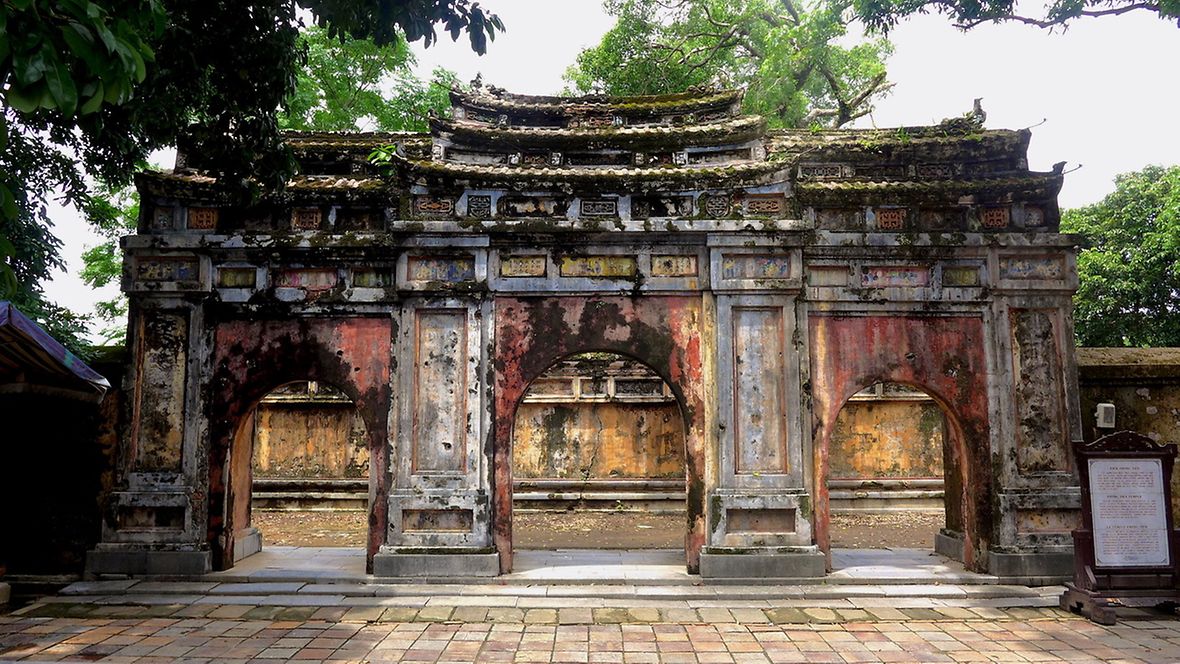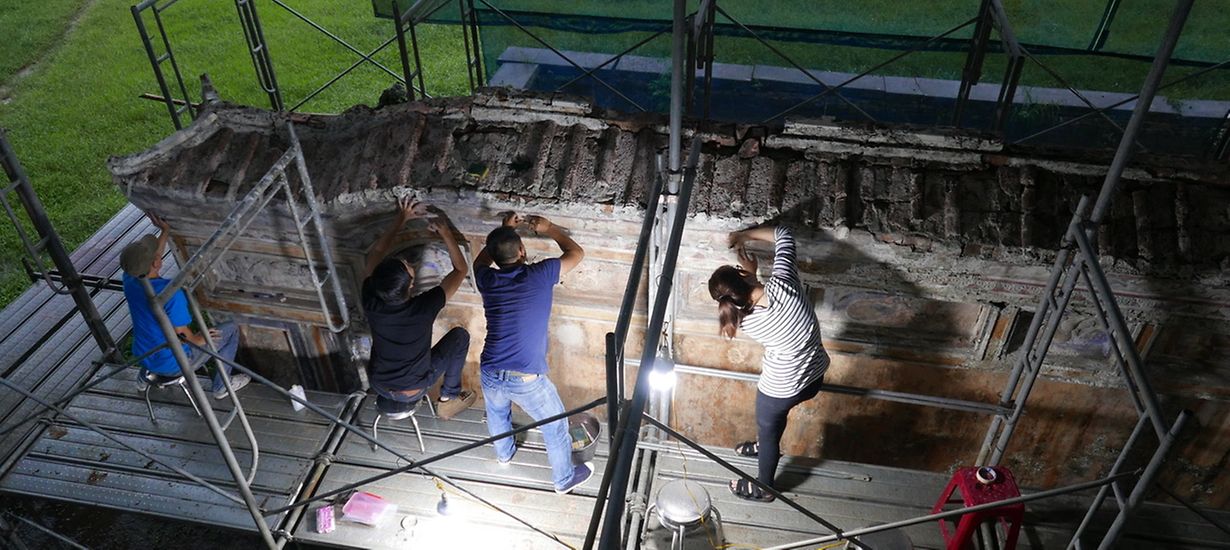Works of art and edifices testify to Viet Nam’s culture reaching back for centuries. They convey past lifestyles to today’s generations in an impressive way – to the Vietnamese population and to tourists from around the world alike. But works of art have a tough time in Viet Nam. The humid and warm climate, past military conflicts and maintenance work neglected and postponed over many decades have taken their toll on these unique buildings.
The German Embassy in Hanoi has therefore been working intensively for many years in close cooperation with Vietnamese experts and organisations within the framework of the Cultural Preservation Programme of the Federal Foreign Office to restore buildings and cultural sites in the long term. Extensive restoration work on the gateway and the spirit screen of the Tomb of Emperor Tu Duc in Hué and the community hall in Tran Dang are examples of Germany’s cultural policy in Viet Nam. Thanks to the cooperation between German restoration experts and Vietnamese cultural sponsors, important steps have been taken towards preserving this cultural heritage. Moreover, further measures have been launched in recent years that are supported by funds from the Cultural Preservation Programme of the Federal Foreign Office that have promising prospects for the future.

Conservation and restoration in line with UNESCO standards
The conservation and restoration of the portal, screen and basin of the Phung Tien Temple began in August 2017 with an accompanying training programme. The almost 200 year old construction is one of the most valuable examples of original preserved architecture from the early period of construction of the imperial city designed in accordance with Feng Shui rules. In contrast to the temple on the site, which was destroyed in 1947, it has withstood the test of time. Traditional building materials and technologies as well as modern conservation materials and methods are being drawn on. A special emphasis is placed on the development and application of an authentic restoration method for frescos and buildings featuring coloured plastering. The project with an accompanying training programme is being implemented with employees from local restoration companies and the Hué Monuments Conservation Centre, as well as freelance artisans.
Promoted by: Cultural Preservation Programme of The Federal Foreign Office
Source: Ed. Federal Foreign Office

